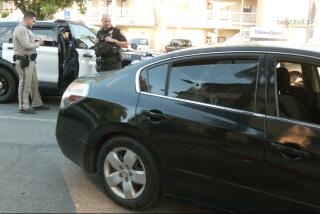The Right Route for the 91
In the beginning, there was an idea that a private toll road would provide new pavement that the public sector couldn’t afford alongside the Orange County section of the Riverside Freeway. Riverside County had needed more space on its end of the freeway too, but took a different tack, building conventional carpool lanes financed by public initiative. In a tale of two counties’ different approaches to the same need, the seeds of conflict were planted.
It later became clear that to get the toll road on the Orange County side, there was a price in road congestion and the flexibility to address it. When the operator of the 91 Express Lanes wanted to sell the road in 1999, it was revealed that Caltrans had delayed planned upgrades of its freeway land for years as part of an earlier legal settlement to avoid hurting the business of the private operator.
The 91 Express Lanes became one of the most expensive tollways in the country, and the tolls could continue to be raised as the lanes became more attractive to riders. It was quite a deal, offering financial protection for the operator and inconvenience for the public. Freeway riders who might have hoped for expanded free lanes found themselves in a bind.
This month, the problem of how to improve those public lanes came home to roost. The Orange County Transportation Authority literally paid its way out of a jam. It agreed to spend a whopping $4million just to add a sixth lane along only 1,000 yards of westbound freeway east of Coal Canyon Road. That’s hard-won yardage at a price that even a Super Bowl contender would think twice about paying to advance the ball.
Orange County was frustrated enough to consider a $4-million payment as fair compromise to get started on public improvements. The silver lining is that if the Orange County Transportation Authority later buys the toll road as an alternative to further incremental payouts, the $4million would be money down.
In the meantime, the entire public-private relationship in Orange County has miffed Riverside County, which paid for its own carpool lanes without conditions on public road improvements. Since many Riverside riders must pass through Orange County on their routes to and from work, they have been affected by the same delays on the freeway and high cost on the toll road.
That county is now suing Caltrans and the tollway on the grounds that the special agreement allows the private operator to exploit its franchise agreement.
The two counties should now look for areas of compromise in ending the litigation and resolving the impasse over the ability to make improvements on the Orange County side. Supervisor Tom Mullen of Riverside County has seemed to indicate that some opening to make peace exists by observing that Orange County at least now has done something to solve the congestion problem.
The $4 million is an expensive lesson, but this is what can happen as a result of the kind of exclusive agreement that is made without fully anticipating consequences. Orange County is taking action now, but earlier it failed to think through the restrictions that would bind it by not building the lanes itself. The county now is in the awkward position of trying to unravel an old problem.
The free lanes never should have been put in such jeopardy. But the question now is what next?
Buying the lanes would be costly, and public ownership surely would not be desirable solely as a means to bail out a financially troubled private operator. But the $4million as down payment would be a start. Public ownership would give transportation officials flexibility to make road improvements that they should have had all along. And they would control the future of the roadway.
Owning the roads would allow transportation officials to decide whether to have general flow lanes, or carpool lanes, or even whether to maintain the tolls for a time. Public ownership of the private lane also would make it easier to resolve the problem with Riverside County.
Four million dollars for 1,000 yards has been another wake-up call on the problems with the 91 Express Lanes exclusivity arrangement. When negotiating a sale price, Orange County needs to guard its pocketbook and remember that the operator is in financial difficulty. Don’t build in a handsome profit for them while getting them off the hook. But buying the lanes at a fair price well may be preferable to paying huge amounts on a piecemeal basis to build road by the thousands of yards.
More to Read
Sign up for Essential California
The most important California stories and recommendations in your inbox every morning.
You may occasionally receive promotional content from the Los Angeles Times.










